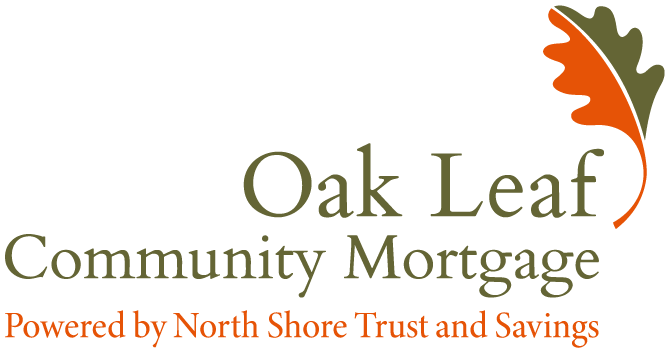Jeśli zwracałeś uwagę na nagłówki gazet, możesz się zastanawiać: "Dlaczego oprocentowanie kredytów hipotecznych spada? w górę kiedy Fed obniża stopy procentowe?" Wydaje się to dziwne, prawda? Cóż, nie jesteś sam - jest to punkt dezorientacji dla wielu nabywców i właścicieli domów. Prawda jest taka, że za kulisami dzieje się więcej, niż mogłoby się wydawać.
Podzielmy to w sposób, który ma sens, abyś wiedział, kiedy następnym razem będziesz myśleć o zakupie lub refinansowaniu domu.
Co powoduje wzrost rentowności obligacji (i oprocentowania kredytów hipotecznych)?
W ostatnim czasie rentowności globalnych obligacji gwałtownie rosły. Ale rzecz w tym, że nie tylko jeden główny powód tego wzrostu. Zamiast tego jest to koktajl różnych czynników, które pobudzają rynek.
- Lepsze dane o zatrudnieniu w USA. sugeruje, że gospodarka radzi sobie lepiej niż oczekiwano.
- Chiny pobudzają swoją gospodarkę z dużymi środkami stymulacyjnymi, co wywołuje falę na światowych rynkach.
- Inwestorzy wyceniają mniej obniżek stóp procentowych od Fed, niż się spodziewali.
Wszystkie te siły powodują wzrost rentowności obligacji - a wyższe rentowności obligacji oznaczają wyższe oprocentowanie kredytów hipotecznych. Ale dlaczego? Zagłębmy się w ten temat.

Fed a oprocentowanie kredytów hipotecznych: Co się naprawdę dzieje?
Tylko w tym tygodniu usłyszeliśmy od czterech członków Rezerwy Federalnej. Chociaż nie hamują oni obniżek stopy funduszy federalnych, robią to ostrożnie. Nadal istnieje duża szansa, że do końca roku zobaczymy jeszcze dwie obniżki.
Ale oto kluczowa informacja: mimo że Fed obniżył stopy procentowe o 0,50% we wrześniu, 30-letnie oprocentowanie kredytów hipotecznych wzrosło. w górę o około 0,75%. Dlaczego więc oprocentowanie kredytów hipotecznych rośnie, gdy Fed obniża stopy procentowe? Odpowiedź może być zaskakująca.
Dlaczego Fed nie kontroluje oprocentowania kredytów hipotecznych?
Powszechnie panuje błędne przekonanie, że gdy Fed obniża stopy procentowe, oprocentowanie kredytów hipotecznych automatycznie spada. Nie do końca tak to działa. Fed obniża tak zwaną stopę Stopa funduszy FedJest to stopa overnight, której banki używają do pożyczania sobie nawzajem pieniędzy. Ma to wpływ na takie rzeczy jak karty kredytowe, kredyty samochodowe i pożyczki krótkoterminowe, ale nie długoterminowe stopy procentowe, takie jak kredyt hipoteczny.
Długoterminowe stopy procentowe - takie jak te związane z kredytami hipotecznymi - są napędzane przez inny zestaw czynników, głównie inflację i rynek obligacji. Obecnie rentowność obligacji rośnie, co wywiera presję na wzrost oprocentowania kredytów hipotecznych.
Co tak naprawdę wpływa na stopy procentowe kredytów hipotecznych?
Jeśli zastanawiasz się, co robi wpływają na oprocentowanie kredytów hipotecznych, największymi czynnikami są inflacja i rynek pracy.
Fed obniża stopy procentowe, ponieważ dostrzega pęknięcia w gospodarce - takie jak spowolnienie inflacji i rynek pracy, który wykazuje oznaki słabości. W rzeczywistości inflacja spada, a koszty mieszkaniowe (które pozostawały w tyle) w końcu nadrabiają zaległości. Jeśli inflacja będzie nadal spadać, a rynek pracy złagodnieje, możemy zaobserwować spadek oprocentowania kredytów hipotecznych w ciągu najbliższych sześciu miesięcy.
Ale oto, co warto wiedzieć: Fed nie obniża oprocentowania kredytów hipotecznych.
Dlatego tak ważne jest, aby edukować siebie i swoje sieci kontaktów - tak, aby gdy ktoś zapyta: "Dlaczego oprocentowanie kredytów hipotecznych nie spada?", mieć właściwą odpowiedź.

Co dalej z oprocentowaniem kredytów hipotecznych?
Konkluzja jest następująca: Jeśli inflacja będzie nadal spadać, a rynek pracy wykaże dalsze oznaki słabości, w ciągu najbliższych sześciu miesięcy oprocentowanie kredytów hipotecznych może zacząć spadać. Należy jednak pamiętać, Fed nie obniża bezpośrednio oprocentowania kredytów hipotecznychSpadek stawek nie nastąpi więc z dnia na dzień.
Co to oznacza dla potencjalnego nabywcy, agenta nieruchomości, budowniczego lub właściciela domu? Czy to nadal dobry czas na zakup, budowę, refinansowanie lub remont?
Prawda jest taka, że zależy to od indywidualnej sytuacji. Przy wahaniach stóp procentowych ważniejsze niż kiedykolwiek jest dokonanie indywidualnej oceny w oparciu o swoje cele i sytuację finansową. Nawet w czasach niepewności istnieją możliwości, niezależnie od tego, czy chcesz teraz zablokować stopę procentową przed dalszymi wahaniami, czy też poczekać na potencjalne spadki stóp procentowych w najbliższej przyszłości.
Jeśli nie masz pewności, jaki powinien być Twój następny krok, Skontaktuj się, aby uzyskać spersonalizowaną ocenę. Możemy przeprowadzić Cię przez opcje, pomóc rozważyć korzyści płynące z zakupu, refinansowania lub innych ruchów na rynku nieruchomości i dostosować plan, który będzie odpowiadał Twoim konkretnym potrzebom na tym zmieniającym się rynku.
Więcej szczegółowych informacji na temat wpływu globalnych trendów gospodarczych na oprocentowanie kredytów hipotecznych można znaleźć na stronie @MortgageMessage-Jest to fantastyczne źródło informacji, dzięki któremu specjaliści od kredytów hipotecznych, agenci nieruchomości i konsumenci są na bieżąco!

Ta wiadomość została napisana przez Joe LaGiglia Oak Leaf Community Mortgage, NMLS #703971. Równy pożyczkodawca mieszkaniowy. Członek FDIC.
Nasz ekspert, Joe LaGiglia, pracuje w Downtown Plainfield jako Senior Mortgage Loan Originator w Oak Leaf Community Mortgage, powered by North Shore Trust and Savings (NMLS #438265). Dzięki ogólnokrajowej licencji, wiedza Joe jest ogromna i nieoceniona. Aby zagłębić się w temat lub nawiązać bezpośredni kontakt z Joe, odwiedź jego stronę strona bio tutaj lub zadzwoń lub wyślij SMS pod numer 630-936-3242 (NMLS #703971).



